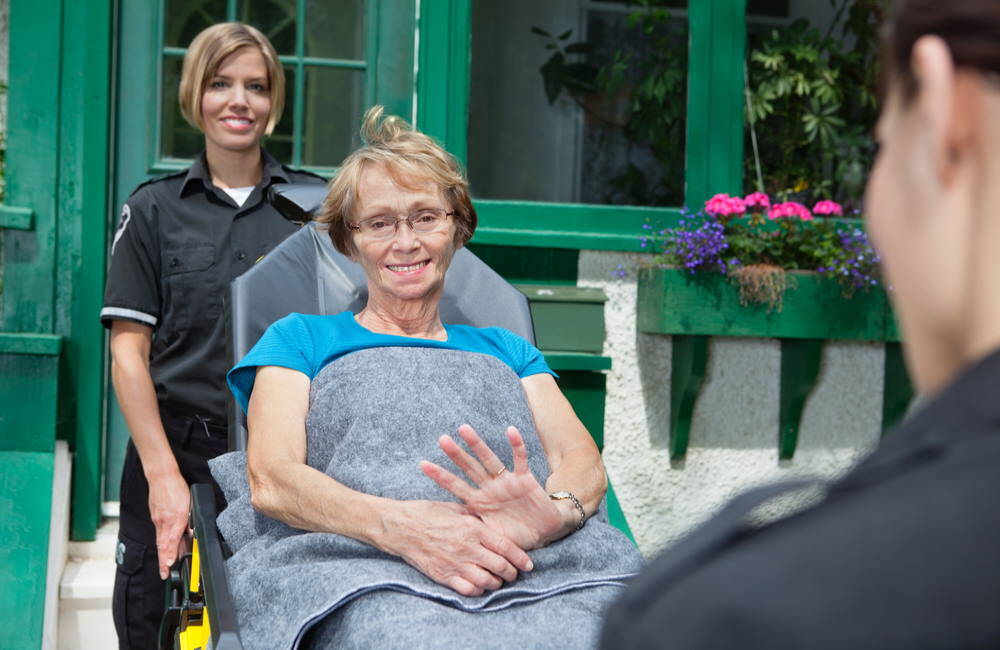
Patients use medical transportation in both emergency and non-emergency situations. Medical transportation options include non-emergency services such as wheelchairs, medical couriers, ambulatory services, travel arrangements and flight nurses. Emergency services include basic life support ambulances, advanced life support ambulances and air ambulances.
The following provides an overview of some of the common medical transportation options used by patients.
Benefits of Medical Transportation
Every medical transportation option has benefits because they all effectively and efficiently get patients to their destination. En route, experienced medical personnel, including doctors and nurses, provide medical services as needed.
In non-emergency medical transportation (NEMT), the ability to schedule everything ahead of time and travel with a flight nurse provides enormous benefits to patients. Rather than take on the challenges of travel alone, they have the peace of mind of having trained medical experts with them.
Types of Medical Transportation
The following offers a list of medical transportation options for patients. All choices fit into two major categories: emergency transportation and NEMT.
Non-Emergency Medical Transportation
NEMT is the best medical transportation option for those with a medical condition or injury that does not pose an immediate threat. Typically, older patients, those with disabilities or those who have difficulty with mobility from an injury use NEMT. Professional NEMT service companies such as Flying Angels can make all travel arrangements and assign a flight nurse to travel with patients. The company offers the service for domestic and international flights.
The specific types of transportation used in NEMT include the following.
Wheelchair
A very common form of transportation in non-emergency situations. Patients use wheelchairs if they have difficulty walking for long distances through the airport and from ground transportation into the airport. Special, narrow wheelchairs are used on planes. Flight nurses ensure that plane personnel safety store personal wheelchairs during flight.
Ambulatory Transportation
This is typically a car or van that takes patients to and from the airport. It’s one of the commonly used forms of NEMT transport. It’s designed for those who can walk with little to no assistance.
Flight Nurses
Flight nurses are a key element in NEMT. They travel with patients to their destination. They have years of experience and a high level of expertise in providing any medical services needed during a flight. They oversee a patient’s medications and monitor their health. Upon arrival, they arrange any ground transportation needed to get a patient to their destination.
Commercial Airline NEMT Explained
Medical Couriers
Medical couriers safely transport blood, organs and other human biological specimens between hospitals or research facilities. All medical couriers must meet government regulations, including provisions of the Health Insurance Portability and Accountability Act.
Stretcher
Used only in circumstances where a patient has an injury that prevents them from standing or walking but is not an emergency situation. This option is limited to international flights on a few selected airlines.
Emergency Medical Transportation Options
Just as the name implies, emergency medical transportation options are used when patients are in a medical crisis and need transportation to a hospital as quickly as possible. The emphasis in all these areas is finding a balance between safety and speed.
Ambulances are typically in one of two categories: basic life support and advanced life support.
Basic Life Support Ambulances
A basic life support ambulance offers medical service from emergency medical technicians during transportation to a hospital, rehabilitation clinic or testing facility. Medical supplies and equipment on a basic life support ambulance include defibrillators, aspirin, EpiPens, pulse oximetry, intranasal naloxone administration, splints, bandages, oxygen tanks and masks, and spinal immobilization equipment.
Advanced Life Support Ambulances
Advanced life support ambulances have equipment that monitors vital signs, as well as advanced drug therapy, cardiac monitoring, oxygen and IV therapy. All services are administered by a highly skilled paramedic or nurse.
Air Ambulances
Air ambulances include helicopters and fixed wing aircraft. Typically, a helicopter transports those in immediate need of clinical treatment, including victims of car accidents, violent crime or natural disasters when time is the absolute imperative. Fixed wing air ambulance is utilized over greater distances with acutely ill patients who patient who cannot tolerate sitting. The situation dictates the type of transportation used. Decisions on emergency transportation are made by medical personnel, while patients decide on non-emergency transport. For NEMT, a service like Flying Angels offers all the advantages and benefits you need and choices for how you want your transportation planned.